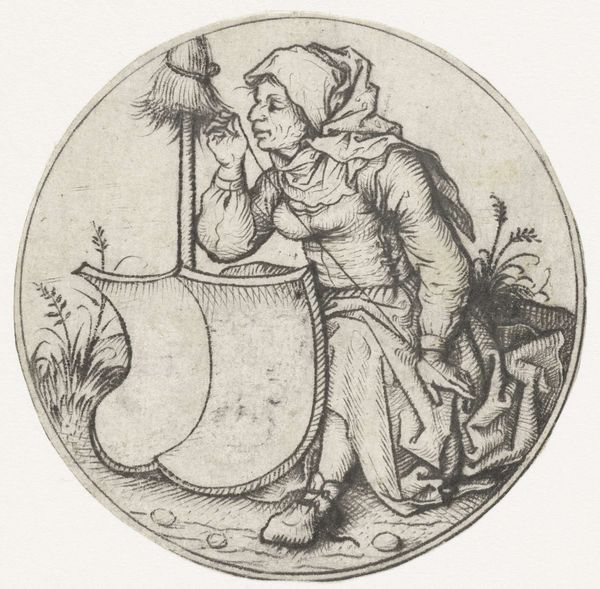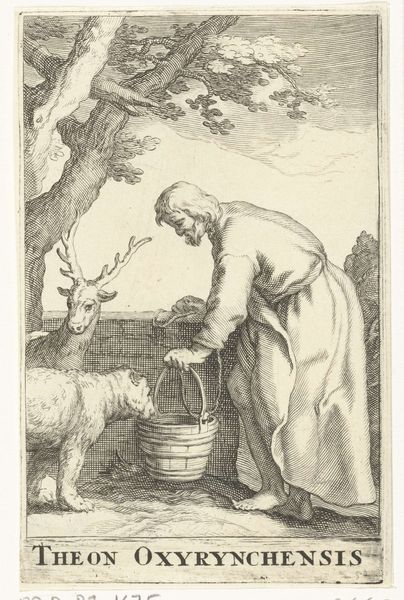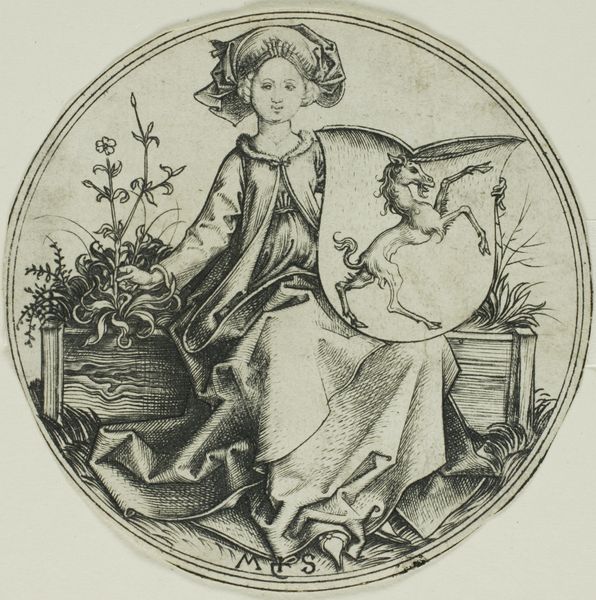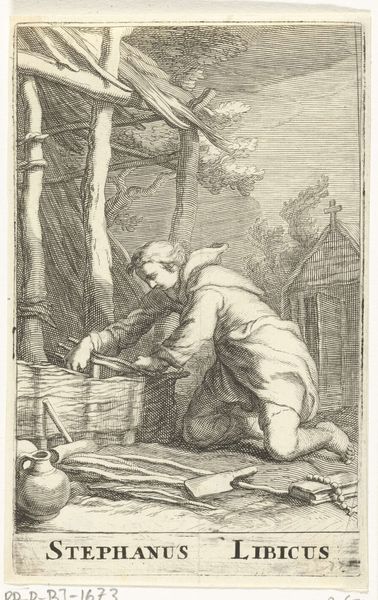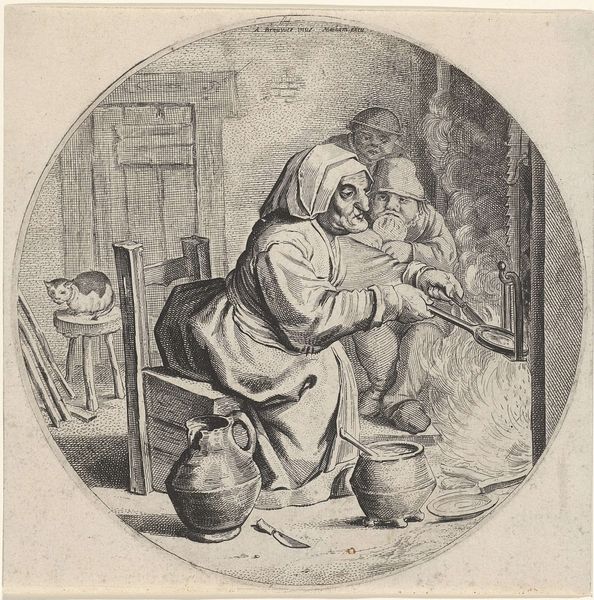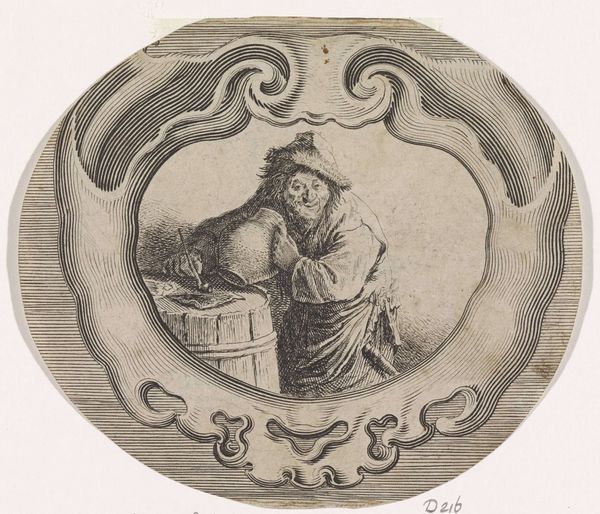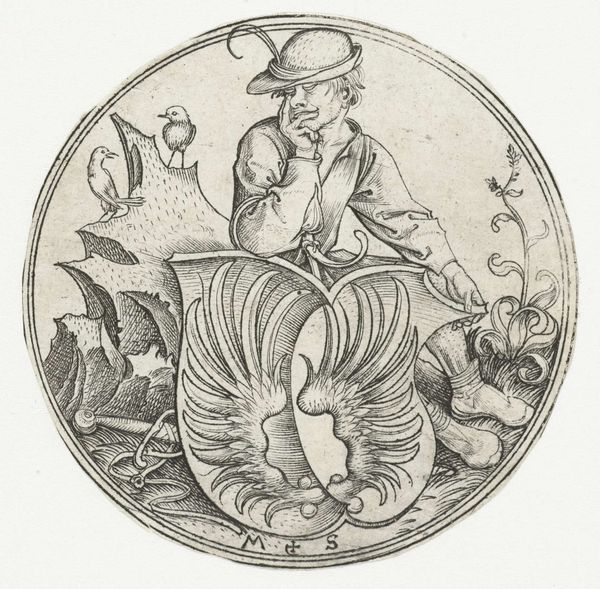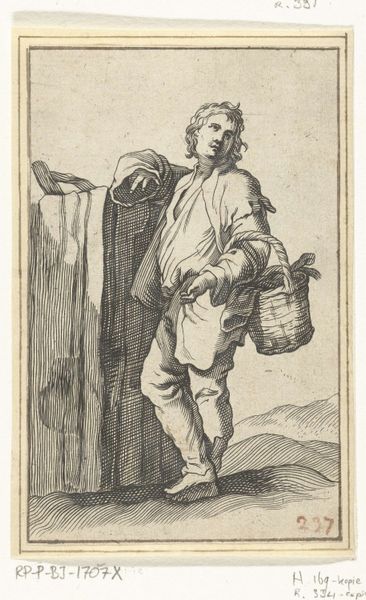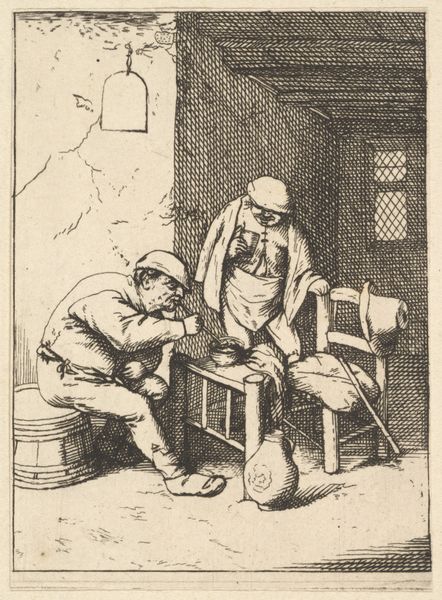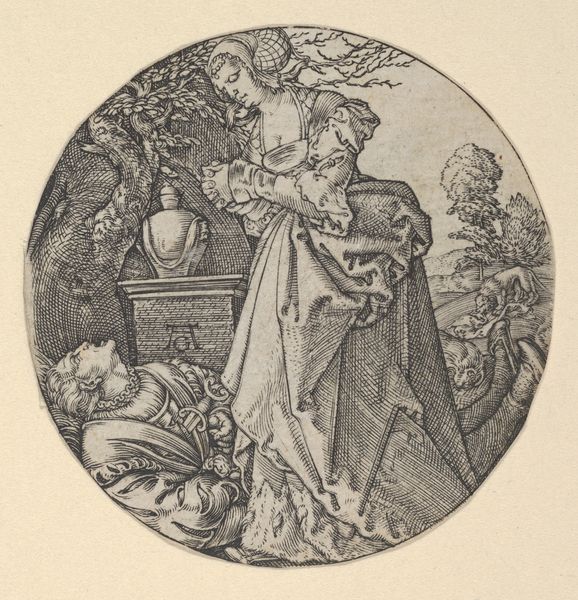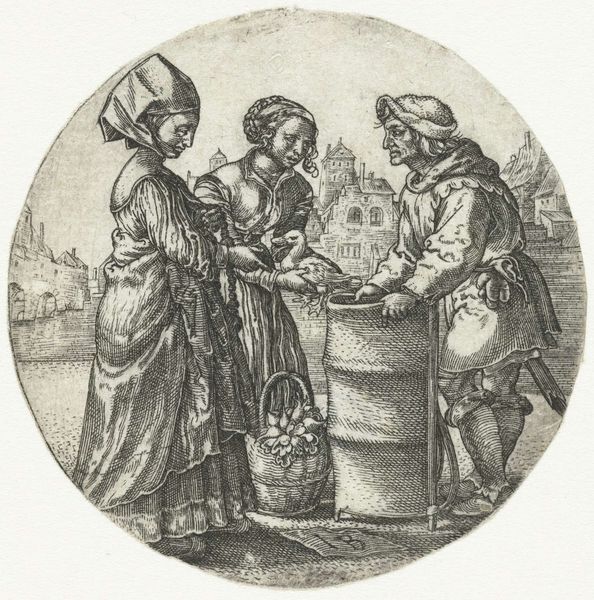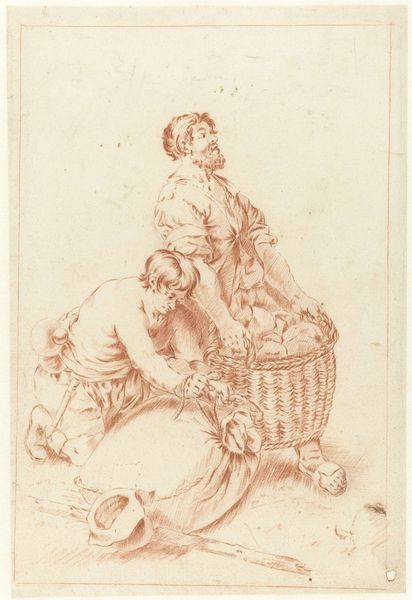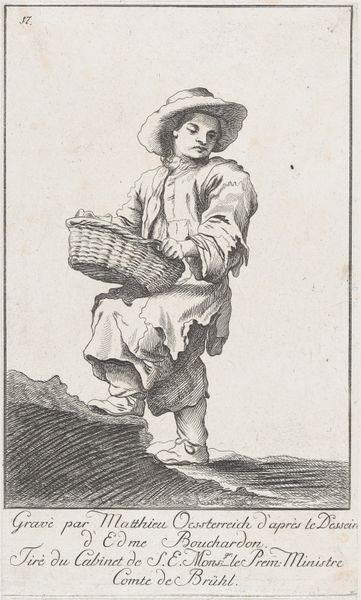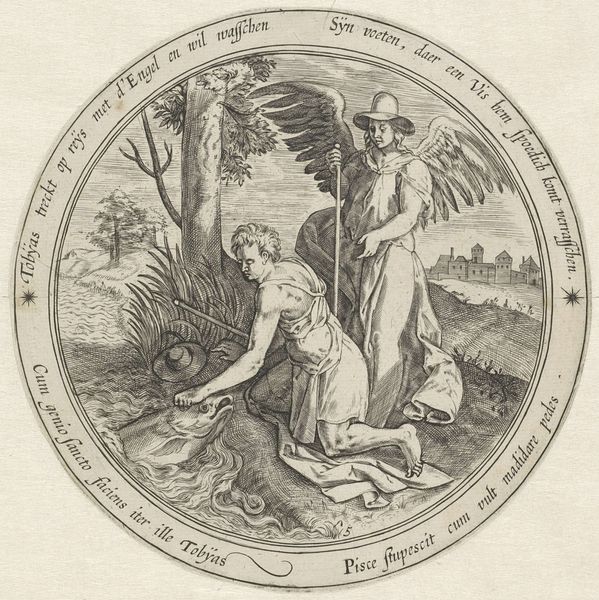
#
light pencil work
#
pen illustration
#
pen sketch
#
pencil sketch
#
personal sketchbook
#
pen-ink sketch
#
pen work
#
sketchbook drawing
#
sketchbook art
#
fantasy sketch
Copyright: Rijks Museum: Open Domain
Curator: Looking at this circular pen sketch from around 1475-1480 by the artist known as the Master of the Amsterdam Cabinet, called "Boer met blank wapenschild" or "Peasant with blank coat of arms," my immediate impression is a sort of melancholic resignation. The fellow seems weighed down. Editor: Absolutely. What resonates for me is how this image really exemplifies the power dynamics embedded in heraldry and social standing during the late medieval period. The peasant, rendered in such detail, carries an unadorned shield, a "blank" or empty emblem— a stark marker of his exclusion from nobility and the associated rights of representation and power. Curator: Yes, I wonder if the blankness also allows us, centuries later, to project onto it, like a personal sigil. I'm drawn to the intricate hatching; you can almost feel the artist’s hand as it moved across the page. Editor: The absence is potent! It reflects the very real socioeconomic limitations faced by the peasantry and the symbolic weight of class barriers. His very posture--slightly slumped, contemplative--suggests the social burden he carries, almost as tangible as the shield. It challenges any romanticized notions of that historical moment. Curator: Indeed. He’s a bit of an outsider looking in, carrying a space to be filled but remaining stubbornly, resolutely empty. It makes you question if the artist felt empathy or… something else. A curiosity perhaps? The gaze feels complicit and critical. Editor: Precisely. The work speaks to a broader struggle, one concerning collective memory, of the unwritten and untold histories embedded within the silences of power. The ‘blankness’ isn't simply an aesthetic choice; it's a statement about the uneven distribution of visibility and voice within society. It also encourages a contemplation about identity – its formation and its imposition. Curator: That’s lovely – his seeming nothingness invites profound interrogation! It’s a peculiar paradox and now I keep coming back to it. Editor: Precisely. Hopefully more of our audience members have that feeling, that's why these works remain so vitally alive in contemporary contexts.
Comments
No comments
Be the first to comment and join the conversation on the ultimate creative platform.
